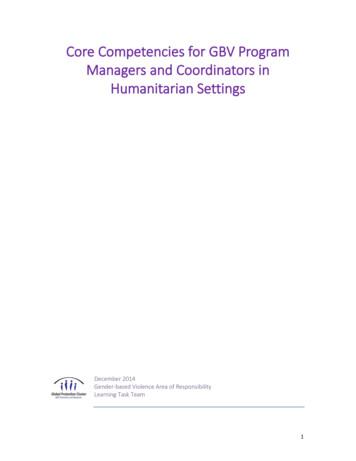HUMAN COMMUNTCATTqiJi - GBV
seventh editionHUMAN COMMUNTCATTqiJie basic courseJoseph a. devitoHunter College of the City University of New YorkЕЭ LONGMANAn Imprint of Addison Wesley Longman, Inc.New York'Reading, Massachusetts*Menlo Park, California«] Iarlow, hnglandDon Mills, Ontario'Sydney'Mexico City*Madrid*Amsterdam
contents in detailspecialized table of contentsxprefacexiP3rt 1Foundations of Human Communication 1unit 1 Preliminaries to Human Communication2The Areas of Human Communication 3Culture and Human Communication 5The Components of Human Communication 7The Purposes of Human Communication 15Summary 18Thinking Critically About the Preliminaries to HumanCommunication 19unit 2 Principles of Communication20Communication Is a Package of Signals 2 1Communication Is a Process of Adjustment 22Communication Involves Content and Relationship Dimensions 24Communication Sequences Are Punctuated 25Communication Involves Symmetrical and ComplementaryTransactions 25Communication Is Transactional 28Communication Is Inevitable, Irreversible, and Unrepeatable 29Summary 32Thinking Critically About the Principles of Communication 32Unit 3 Perception34The Perception Process 35Processes Influencing Perception 36Critical Perception: Making Perceptions More AccurateSummary 50Thinking Critically About Perception 50unit 4 Listening 52The Process of Listening 53Listening and Culture 58Listening Effectively 59Summary 66Thinking Critically About Listeningv6647
Vi I CONTENTS IN DETAILunit 5The Self in Communication68Self-Concept 69Self-Awareness 70Self-Esteem 73Self-Disclosure 75Summary 82Thinking Critically About the Self in Communicationunit 6Tbc Culture in Communication8284How Cultures Differ 87Theories of Culture and Communication 90Intercultural Communication 94Summary 100Thinking Critically About Culture and Communication100p a r t 2 Messages: Verbal and Nonverbal 104unit 7Unit 8Preliminaries to Verbal and Nonverbal Messages106The Interaction of Verbal and Nonverbal Messages 107Meanings and Messages 108Message Characteristics 110Summary 120Thinking Critically About Verbal and Nonverbal Messages120Verbal Message Principles122Excluding and Inclusive Talk 123Downward and Equality Talk 124Criticism, Praise, and Honest Appraisal 126Lying and Honesty 127Gossip and Confidentiality 128Disconfirmation and Confirmation 130Summary 138Thinking Critically About Verbal Message PrinciplesUnit 9Verbal Message BarriersPolarization138140141Intensional Orientation 142Fact-Inference Confusion 145Bypassing 146Allness 149Static Evaluation150Indiscrimination 150Summary 152Thinking Critically About Verbal Message Barriers152
CONTENTS IN DETAIL viiUnit 10Nonverbal Messages of Body, Sound, and Time154Body Movements 155Facial Movements 156Eye Movements 159Paralanguage 161Silence 163Temporal Communication 164Summary 170Thinking Critically About Nonverbal Messages of Body, Sound,and Time 170Unit 11Nonverbal Messages of Space,Touch,Smell,and Artifact 172Proxemics 173Territoriality 177Touch Communication 179Smell Communication 182Artifactual Communication 182Summary 186Thinking Critically About Nonverbal Messages of Space, Touch,Smell, and Artifact 186p a rt 3 Interpersonal Communication and Relationships 188unit 12Preliminaries to Interpersonal Communicationand Relationships 190Interpersonal Communication 191The Stages of Interpersonal Relationships 193Theories of Interpersonal Relationships 198Summary 206Thinking Critically About Interpersonal Communicationand Relationships 206unit 13Interpersonal Communication: ConversationThe Process of Conversation 208The Management of Conversation 216Problems in Conversation: Prevention and RepairSummary 230Thinking Critically About Conversation 230Unit 14226Relationship Development, Deterioration,Maintenance, and Repair 232Relationship Development 234Relationship Deterioration 237Relationship Maintenance 240Relationship Repair 244Self-Repair 247Summary 248Thinking Critically About Relationship Development,Deterioration, Maintenance, and Repair 249208
VÜiCONTENTS IN DETAILUnit 15Friendship, Love, and Family Communication250Friendship Communication 251Love Communication 255Family Communication 261Improving Communication in Friendship, Love,and Family Relationships 270Summary 272Thinking Critically About Friendship, Love,and Family Communication 272unit 16Interpersonal Conflict274The Nature of Interpersonal Conflict 275Conflict Management 280Before and After the Conflict 290Summary 292Thinking Critically About Interpersonal Conflict292part 4 Group and Public Communication 294unit 17Preliminaries to Small Group Communication296The Small Group 297Idea-Generation Groups 302Personal Growth Groups 303Information-Sharing Groups 305Problem-Solving Groups 306Small Group Formats 311Summary 312Thinking Critically About Small Group Communicationunit 18Members and Leaders in Small GroupCommunication 314Members in Small Group Communication 315Leaders in Small Group Communication 319Membership and Leadership in Cultural PerspectiveSummary 332Thinking Critically About Members and Leadersin Small Group Communication 332unit 19312Organizational Communication329334Organizations and Organizational Communication 335Approaches to Organizations 337Communication Networks 340Communication Flow in Organizations 342Summary 352Thinking Critically About Organizational Communication352
CONTENTS IN DETAIL ixUnit 20 Interviewing354Interviewing Defined 355Questions and Answers 357The Information Interview 358The Employment Interview 360The Lawfulness of Questions 368Summary 370Thinking Critically About Interviewingunit 21370Preliminaries to Public Communication372The Nature of Public Communication 373Apprehension in Public Communication 378The Audience in Public Communication 384Summary 388Thinking Critically About the Preliminaries to PublicCommunication 388unit 22 Principles of Public Communication390Principles of Informative Communication 391Principles of Persuasive Communication 392The Three Proofs 395Criticism in Public Communication 399Summary 404Thinking Critically About the Principlesof Public Communication 404Unit 2 3 Preparing- and Presenting- the Public SpeechStepStepStepStepStepStepStepStep1 . Select Your Topic and Purpose 4072. Analyze Your Audience 4093. Research Your Topic 4104. Formulate Your Thesis and Major Propositions5. Support Your Major Propositions 4116. Organize Your Speech Materials 4117. Word Your Speech 4138. Construct Your Conclusion, Introduction,and Transitions 414Step 9. Rehearse Your Speech 415Step 10. Present Your Speech 415Summary 426Thinking Critically About Preparing and Presentingthe Public Speech 426glossary429bibliographyindex468446406410
Communication Is a Process of Adjustment 22 Communication Involves Content and Relationship Dimensions 24 Communication Sequences Are Punctuated 25 Communication Involves Symmetrical and Complementary Transactions 25 Communication Is Transactional 28 Communication Is Inevitab
GBV. Increase public awareness of GBV by moving away from the mere 16 days of activism to a robust 365 days campaign against GBV and encourage every citizen to take specific steps to prevent GBV in both the private and public arena. In light of the recommendations made the Government UN GBV JP facilitated a one day workshop
managing a GBV program with an NGO or coordinating a GBV working group. GBV coordinators can and are recruited without GBV program management experience and sometimes move from coordination into program management positions. Many GBV Program Managers do not move
The Gender Based Violence (GBV) conference will bring together partners working in the GBV Sector; Government Department stakeholders; representatives from donors in the Development Sector, SANAC and the Global Fund. The conference will focus on: The State's Response in dealing with GBV Exploring the link between GBV & HIV
Report Title: Disability Considerations in GBV Programming during . risk mitigation and response efforts during the COVID-19 pandemic. This document complements other resources relating to GBV and COVID-19 and assumes that the user is already familiar with common GBV prevention, risk mitigation and response . There is currently no research .
gender-based violence (GBV) across all sectors of humanitarian response. . promotes resilience and supports lasting solutions to the problem of GBV. Two overarching strategic priorities – inclusivity and adopting a supportive communications . Humanitarian actors are aware of and support the GBV Guidelines, and management and leadership .
What is a Gender-based Violence Specialist? . Able to conduct strategic planning for GBV prevention and response (B) . can and are recruited without GBV program management experience and sometimes move from coordination into program management positions. Many GBV Program Managers do not move into
availability of gender based violence (GBV) prevention and response services and deterred . The Provincial Programme Analyst, GBV will contribute to the effective management of UNFPA supported GBV activities, ensuring multi-sectoral approach to prevention, mitigation . Strategic Engagement and Technical Coordination
Academic writing is explicit in its signposting of the organisation of the ideas in the text: ever built in Britain. However, even by the end Partly this was because the current control of the land. Similarly, Marx was interested his own family. In addition, he has a between orders and bishops. For example, in the Northern context. Explicitness Academic writing is explicit .























